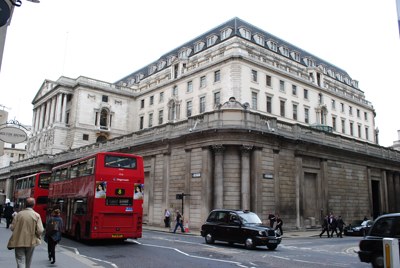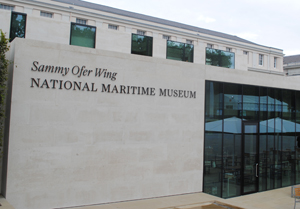 Founded in 1694, the Bank of England has been located on its current site – on Threadneedle Street opposite Mansion House – since 1734.
Founded in 1694, the Bank of England has been located on its current site – on Threadneedle Street opposite Mansion House – since 1734.
Known as the ‘Old Lady of Threadneedle Street’, the bank was originally situated there in a small, purpose-built building designed by George Sampson after it’s relocation from a rented property in nearby Prince’s Street (which now runs along the bank’s west side).
Its footprint was subsequently expanded by Sir Robert Taylor – this included covering a site to the west previously been occupied by the church of St Christopher-le-Stocks. Among Sir Robert’s design features were a centrally located rotunda.
In the late 18th century the bank underwent the start of a total transformation under the eye of architect Sir John Soane. Soane, who was Surveyor to the Bank of England between 1788 and 1833, saw the size of the bank more than doubled in a project which lasted well into the 19th century (indeed, such was the size of the bank that at its peak during Soane’s tenure more than 1,000 clerks were working in the building with some even having on-site residences).
Covering three-and-a-half acres on an asymmetrical site, Soane’s design was at least partly inspired by the ancient architecture of Greece and Rome and featured a complex arrangement of courts, halls and offices all surrounded by a high, windowless curtain wall. The buildings inside the wall were largely no more than three stories high and included public banking halls, offices for manufacturing banknotes, and a barracks housing the 30-strong Bank Guard. Given the great curtain wall around the site, the buildings were all either top-lit or faced into courts and light-wells.
Little today remains of Soane’s bank – it was demolished in the 1920s and replaced with a single building designed by Herbert Baker – but the exception is the dominating outer wall which surrounds the entire site (pictured above from the south-east corner).
You can see a reconstruction of Soane’s 1793 Stock Office in the museum (see our earlier entry here), which has just reopened its doors after a three month refurbishment, and it’s also possible to see some of the ‘caryatids’ which Soane had originally placed on the dome of the Old Dividend Office and which are now located on rotunda created by Baker. More of Soane’s work can be seen at the Sir John Soane’s Museum (see our earlier entry here).
WHERE: The Bank of England Museum, Bartholomew Lane off Threadneedle Street (nearest Tube stations are Bank/Monument and Mansion House); WHEN: 10am to 5pm, Monday to Friday (last entry 4.45pm); COST: Free; WEBSITE: www.bankofengland.co.uk/education/Pages/museum/visiting/default.aspx.
WHERE: 13 Lincoln’s Inn Fields. Nearest tube is Holborn. WHEN:10am to 5pm, Tuesday to Saturday; COST: Free; WEBSITE: www.soane.org.

